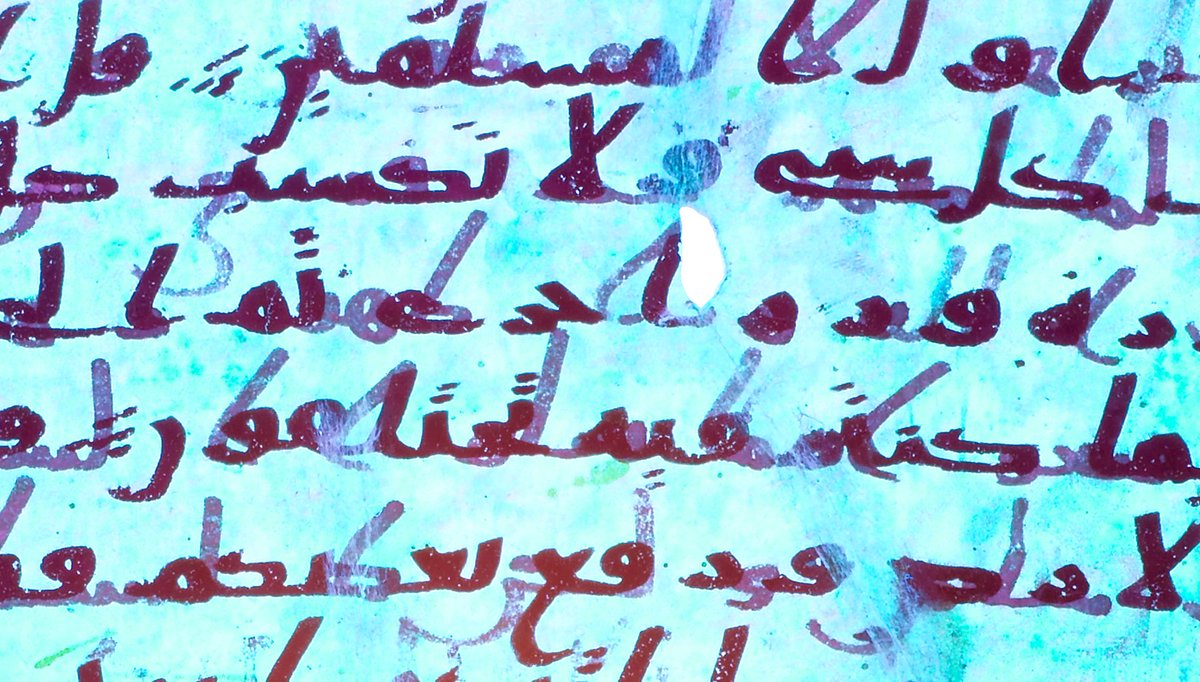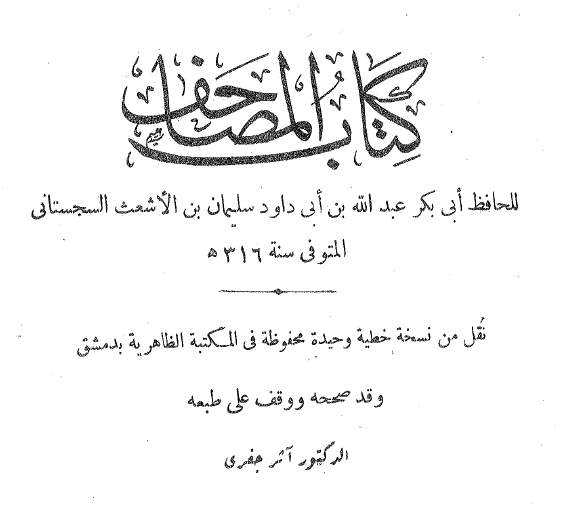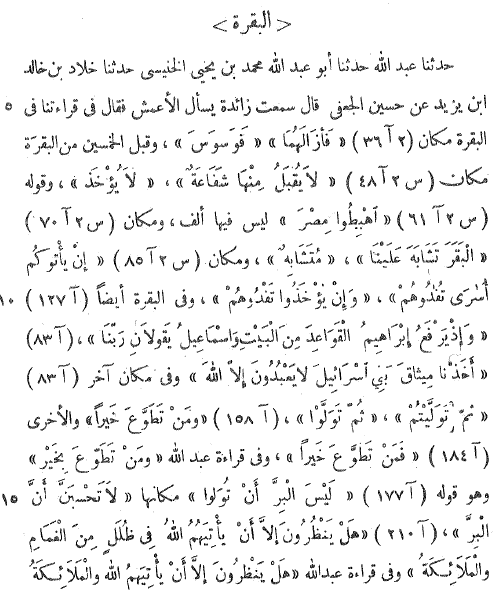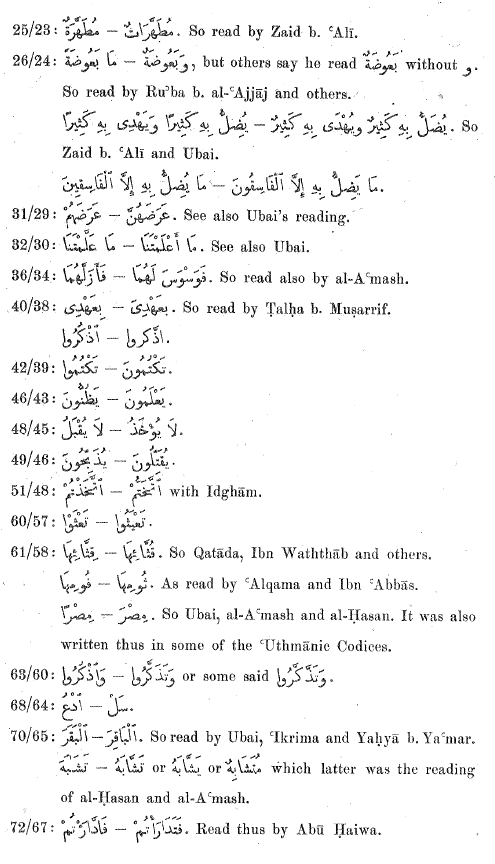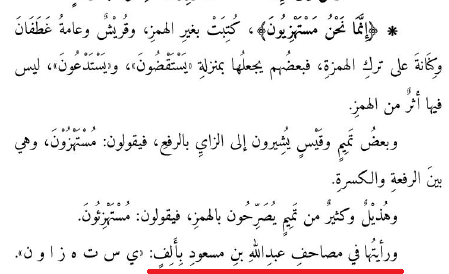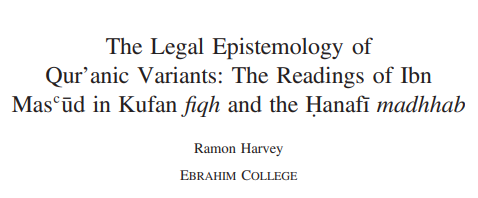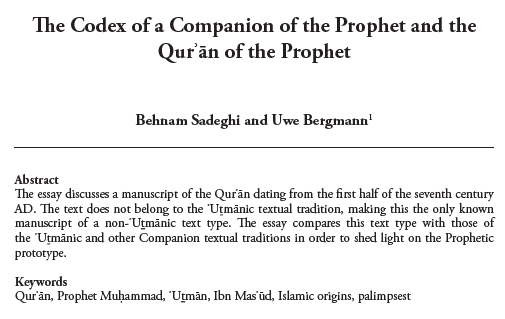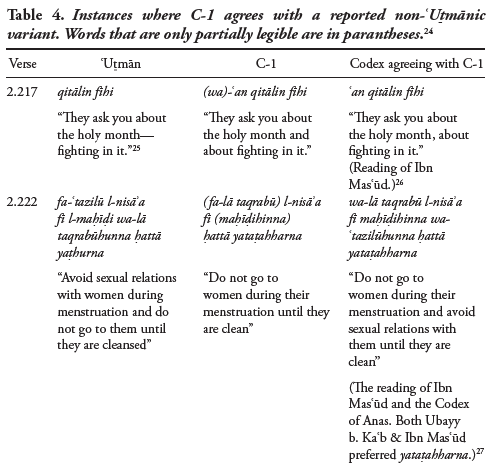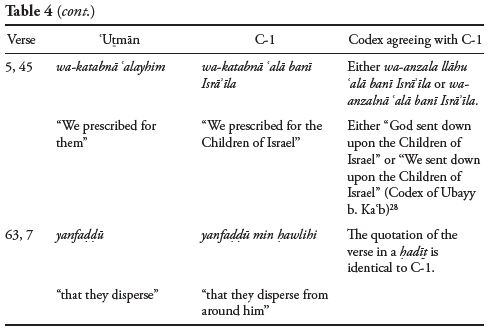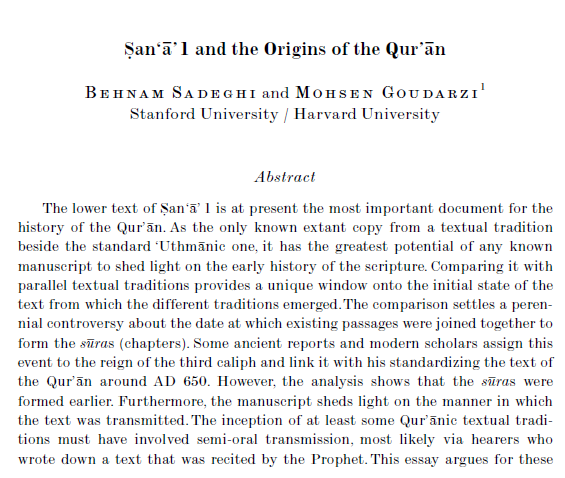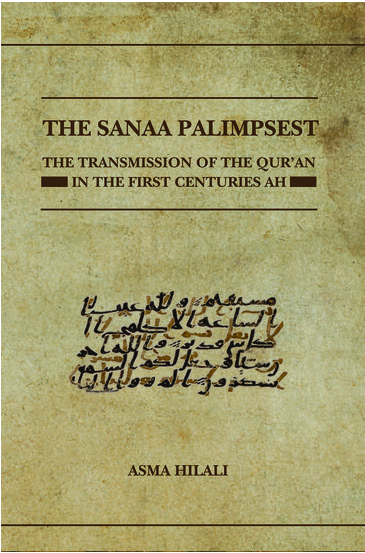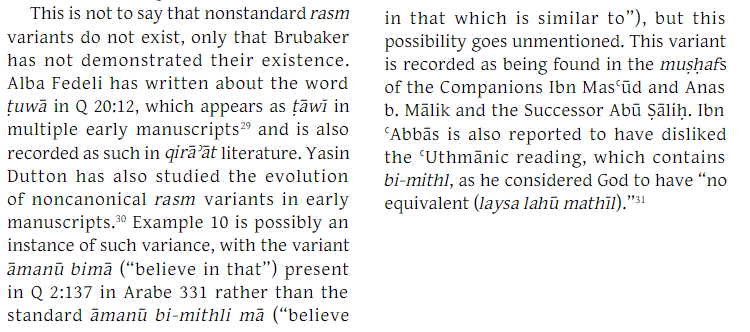So now we& #39;ve talked about the establishment of the canon of Quranic recitation, some questions arose about pre-Uthmanic recitations and written forms of the Quran arose. What were they like, how can we know? THREAD:
https://twitter.com/PhDniX/status/1265724932413173762">https://twitter.com/PhDniX/st...
https://twitter.com/PhDniX/status/1265724932413173762">https://twitter.com/PhDniX/st...
All manuscripts that we know today, save one, are Uthmanic manuscripts: that is, they all clearly descend from a single early standard text. There are some small (about 40) regional differences in the consonantal skeleton. We lack essential material evidence for them.
Only the lower text of the Sanaa Palimpsest seems to deviate from the standard text in any significant way. We will get back to that in a bit.
Literary sources speak of "companion codices" and "companion readings", which deviate in not insignificant ways from the Uthmanic text.
Literary sources speak of "companion codices" and "companion readings", which deviate in not insignificant ways from the Uthmanic text.
The most comprehensive account of the companion codices is certainly Ibn Abī Dāwūd al-Sijistānī& #39;s Kitāb al-Maṣāḥif "the book of (Quranic) codices", who not only collects variants among the Uthmanic texts, but also reports of what is present in companion codices.
Companion codices are personal copies which were apparently kept by companions of the prophet such as Ibn Masʿūd, ʾUbayy and Ibn ʿAbbās. Of these probably the best reported is Ibn Masʿūd& #39;s. Looking at these, we frequently see the wording is quite different from the standard text.
These differences make it quite clear that these copies are not copies of the Uthmanic text, but are rather parallel versions of the Quran. The extent of the differences between these codices and the standard text are unclear, the reports are only fragmentary.
It is important to note here that there is a difference between a companion *reading* and a companion *codex*. Some report that Ibn Masʿūd read http://quran.com/1/7 ">https://quran.com/1/7"... ġayri l-maġḍūb as ġayra l-maġḍūb. That is not something that would have shown up in his codex.
The earliest Quranic manuscripts lacked means to write short vowels, so such differences could not have appear in his muṣḥaf, but may have appeared in his reading.
Considering that we have no physical evidence of Ibn Masʿūd& #39;s codices, how sure can we be it actually existed?
Considering that we have no physical evidence of Ibn Masʿūd& #39;s codices, how sure can we be it actually existed?
I think it is quite clear that Ibn Masʿūd& #39;s codex really existed. It played a central controversial role in Kufa. Ibn Masʿūd famously opposed the canonization of the Uthmanic text, and continued to recite and teach according to his personal copy in Kufa.
The evidence that this was a historical event, I think are quite clear. First, we have fairly early Kufan authorities like al-Farrāʾ giving first hand reports of what they saw in the codex of Ibn Masʿūd (or at least what they believed was the codex of Ibn Masʿūd).
More importantly, there are actually some disputes of jurisprudence that quite clearly stem from Ibn Masʿūd& #39;s codex, rather than the Uthmanic one, as beautifully shown by @RamonIHarvey.
https://ramonharvey.files.wordpress.com/2019/06/readings-of-ibn-masud-ramon-harvey.pdf">https://ramonharvey.files.wordpress.com/2019/06/r...
https://ramonharvey.files.wordpress.com/2019/06/readings-of-ibn-masud-ramon-harvey.pdf">https://ramonharvey.files.wordpress.com/2019/06/r...
So really as late as the late second century (at least) there was still obvious engagement with Ibn Masʿūd& #39;s text, which makes it all the more striking that we still have not found any trace of his Muṣḥaf. I maybe have an idea how to resolve this issue, but that& #39;s for later...
Now back to the Sanaa Palimpsest. This is a manuscript which simply has the standard text, but looking closely one sees an earlier text has been removed. This lower text, which shows up better under UV light, is also clearly a Quranic text, but it& #39;s not the standard text!
Behnam Sadeghi considered this text to be a codex of a companion of the prophet, because the types of variants are quite reminiscent of companion codices. While this is the case, it doesn& #39;t quite correspond to any one known report of the Companion codices.
But it does have all the hallmarks: a non-standard Sūrah order (as is also reported for Ibn Masʿūd and ʾUbayy) and not infrequently appearance of slightly different wording. Some of them correspond to those reported for companion codices.
Eventually Sadeghi published together with @MohsenGT an excellent edition of the lower text. Also Asma Hilali has published an edition. It edits fewer pages and frequently disagrees with the reading of Sadeghi & Goudarzi. I like the Sadeghi & Goudarzi version better.
Was this another (unknown) companion codex? or is it actually the codex of Ibn Masʿūd or ʾUbayy, and is the literary tradition simply not accurate enough in its attributions? Questions that do not seem easy to answer right now. Hopefully future research will resolve this.
Sometimes companion variants show up in otherwise standard Uthmanic manuscripts. A cool variant shows up in Arabe 331, which has http://quran.com/2/137 ">https://quran.com/2/137&quo... as fa-ʾin ʾāmanū bimā ʾāmantum(ū) bih "so if they believe in what you believe in"
https://gallica.bnf.fr/ark:/12148/btv1b84152099/f10.image">https://gallica.bnf.fr/ark:/1214...
https://gallica.bnf.fr/ark:/12148/btv1b84152099/f10.image">https://gallica.bnf.fr/ark:/1214...
Rather than the standard text fa-ʾin ʾāmanū bi-miṯli mā ʾāmantum(ū) bih "And if they believe in the like of that which you believe in". This variant is discussed in some detail in @dbru1& #39;s book "Corrections in Early Qurʾān manuscripts" https://www.amazon.com/Corrections-Early-Qur%CA%BE%C4%81n-Manuscripts-Manuscript/dp/1949123030">https://www.amazon.com/Correctio...
But it was @therealsidky who pointed out in his review of the book the significance of this variant in relation to reports of companion codices. This variant is reported for Ibn Masʿūd and ʾAnas b. Mālik! Was it imitating those?
https://www.academia.edu/40931921/Daniel_Alan_Brubaker_Corrections_in_Early_Qur%CA%BE%C4%81nic_Manuscripts_Twenty_Examples_Lovettsville_Think_and_Tell_Press_2019_">https://www.academia.edu/40931921/...
https://www.academia.edu/40931921/Daniel_Alan_Brubaker_Corrections_in_Early_Qur%CA%BE%C4%81nic_Manuscripts_Twenty_Examples_Lovettsville_Think_and_Tell_Press_2019_">https://www.academia.edu/40931921/...
I& #39;m inclined to think that it is probably Ibn ʿAbbās& #39; disapproval of the verse because "he (God) has no equal", may have been an argument that swayed the scribe to deviate from the standard text here, even though it closely adheres to it otherwise.
So that& #39;s what we can say about the companion codices. They seem to have really existed (at least Ibn Masʿūd& #39;s!), but the material evidence is really sparse. The Sanaa Palimpsest is a rare look at what the pre-canonical Muṣḥafs may have looked like.
If you enjoyed this thread and want me to do more of it, please consider buying me a coffee.
https://ko-fi.com/phdnix .">https://ko-fi.com/phdnix&qu...
If you want to support me in a more integral way, you can become a patron on Patreon! https://www.patreon.com/PhDniX ">https://www.patreon.com/PhDniX&qu...
https://ko-fi.com/phdnix .">https://ko-fi.com/phdnix&qu...
If you want to support me in a more integral way, you can become a patron on Patreon! https://www.patreon.com/PhDniX ">https://www.patreon.com/PhDniX&qu...

 Read on Twitter
Read on Twitter